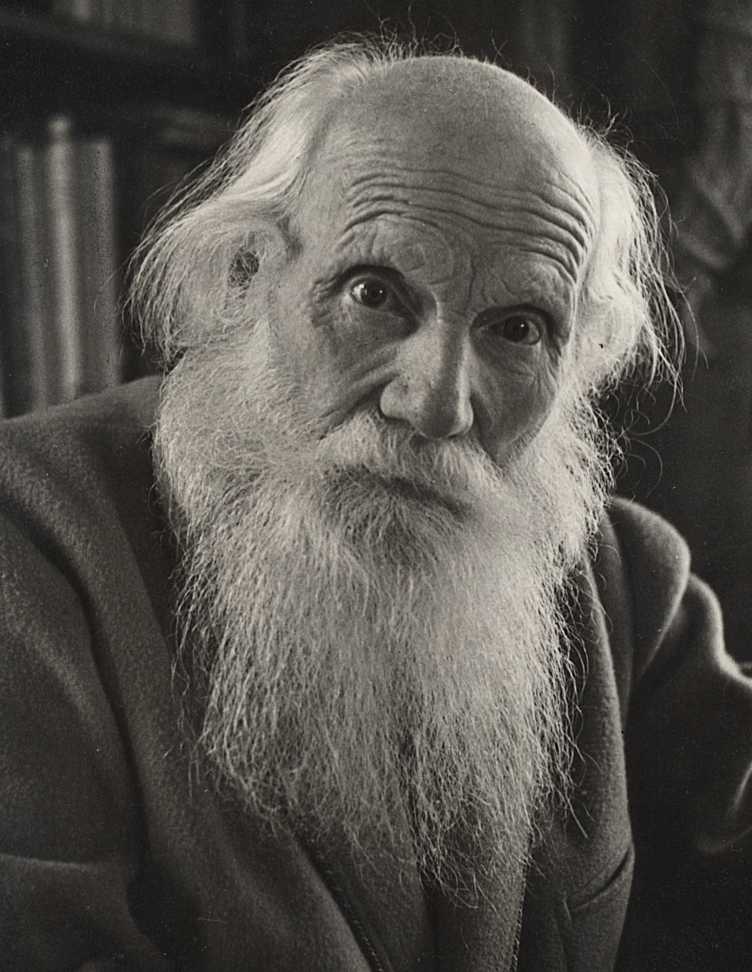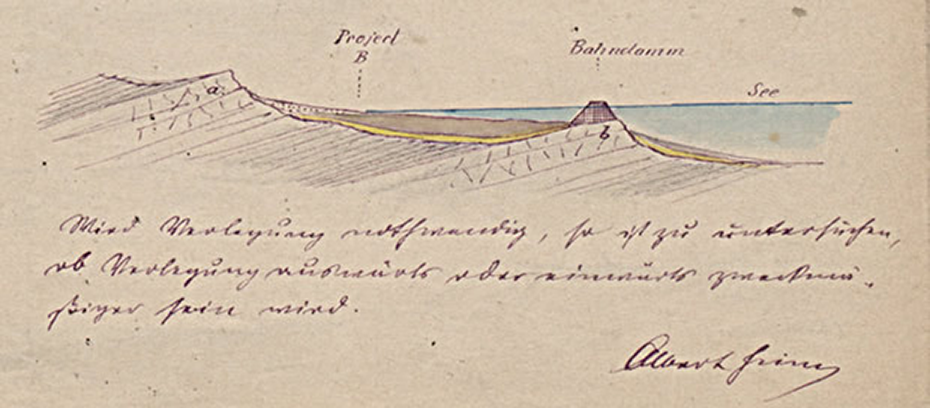Albert Heim (1849–1937)
Professor of geology at the Federal Polytechnic Institute and the University of Zurich

The second child of businessman and banker Johann Konrad Heim and his wife Sophie Elisabeth (née Fries), Albert Heim was born in Zurich on 12 April 1849. Upon completing primary school in Zurich and Hottingen, he attended the Industrieschule (grammar school) from 1864 to 1866.
Motivation and interests in geology
Influenced by popular contemporary literature on the Alps, the foundation of the Swiss Alpine Club (SAC) in 1865 and excursions to the Glarus Alps and Appenzellerland, he already developed an interest in geological questions as a schoolboy: for instance, he used his great artistic and design talent to produce watercolours of glacial landscapes and reliefs of mountain ranges.
Studies and diploma thesis
In 1866, straight from school, Heim embarked on a science degree at the University of Zurich. After three semesters, he switched to the Federal Polytechnic Institute (now ETH Zurich), which he left in 1869 as a qualified "specialist subject teacher for the natural sciences". His teacher and sponsor Arnold Escher von der Linth, a professor of geology at the University and ETH Zurich, set the topic for his diploma thesis in glacial geology. After graduating, Heim continued his education abroad, enrolling at the University and Mining Academy in Berlin for a semester before embarking on the traditional study tour, which took him to Denmark and Norway.
Working as Professor and marriage
Back in Zurich, Heim's academic career took a rapid course, even for that time: in 1871 he completed a post-doctoral degree at the University of Zurich and the Polytechnic Institute; in the winter semester of 1871/72, as a private lecturer, he gave lectures on "glaciers and the Ice Age" and "selected chapters from geology"; and in 1872, at the age of twenty-three, he was chosen as Arnold Escher von der Linth's successor as professor of technical and general geology at the Polytechnic Institute; three years later, he also became a professor at the nearby university . In 1875 Heim married Marie Vögtlin (1845 to 1916), who had become the first female physician in Switzerland to open her own practice in Zurich the previous year, where she continued working after the wedding. The Heims' careers had a lasting influence on their two children: Arnold (1882 to 1965) became a geologist, Helene (1886 to 1979) a nurse.
Geologist of the heart
Until his retirement in 1911, Heim held hundreds of lectures, including "general geology", "the geology of Switzerland" and "the prehistory of man". His excursions in Switzerland and abroad were legendary both among his students and his peers. However, Heim was not just dedicated to research and teaching; he was also a popular author of geological reports, such as in connection with railway construction projects like the Simplon Tunnel or accidents such as the Vorstadt disaster in Zug (1887). Moreover, he was involved intensively in various commissions and societies, including as the longstanding President of the Geological Commission, a member and temporary President of the Naturforschende Gesellschaft Zürich, and a member of the SAC.
Charity commitment
Beyond his geological interests, he also championed cremation for the construction of the Zurich crematorium and, together with his wife, was an active member of the alcohol abstinence movement.
Until his death, Albert Heim received many honours and accolades in recognition of his devotion to science and propagating an interest in geological issues. He died on 31 August 1937 at the age of eighty-eight.
Manuscript

Works
Albert Heim's chief monographic and cartographical works, such as "Untersuchungen über den Mechanismus der Gebirgsbildung im Anschluss an die geologische Monographie der Tödi-Windgällengruppe" (1878), "Handbuch der Gletscherkunde" (1885), "Geologische Karte der Schweiz" (1894) or "Geologie der Schweiz" (1916 to 1922) primarily focused on the geology of the Alps and the question of their origin. Mostly based on detailed studies of the Glarus Alps or the Säntis region, he combined his own geological observations with expert contemporary knowledge and developed new theories, which sometimes led to fierce arguments with his peers. The most famous example is the dispute on the origin of the so-called Glarus Double Fold, which Heim ended once and for all by acknowledging the veracity of his opponents' theory. However, Heim's publications, maps, panoramas and reliefs are more than just testimonies to his key contributions to the development of geology; they are also evidence of his services to the use of scientific drawing and photography as elements for the documentation and presentation of geological contexts.
Holdings
The ETH Zurich University Archives contain a part of Albert Heim's personal papers (Hs 400 and 401) with numerous manuscripts, sketches, drawings, watercolours, photographs and letters. The personal papers index, which can be viewed online on ETH E-Collection, provides an overview of these holdings. A selection of slides by Albert Heim, some of which are hand-coloured, can be viewed directly on E-Pics Image Archive Online. Information on the life and work of Albert Heim is provided in the corresponding external page biographical file. An additional part of personal papers belonging to Heim featuring field notebooks and expert reports are kept at Zentralbibliothek Zürich (Nachl. A. Heim I-XX).
Albert Heim's teaching collection (rocks, fossils, minerals) is available in the catalogue E-Pics Earth Science Collections.